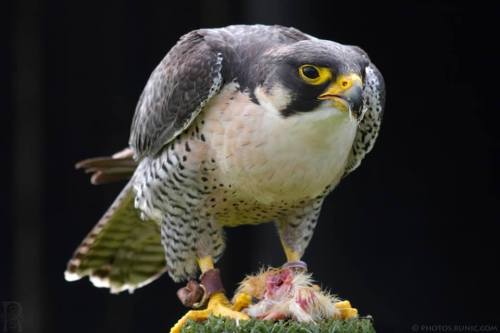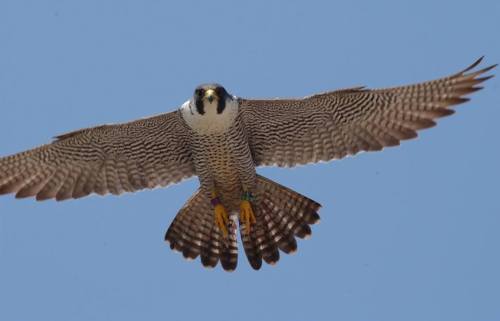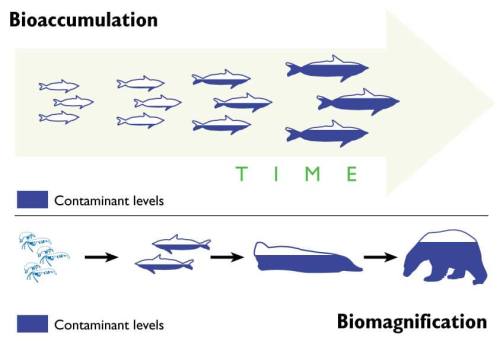The Peregrine Falcon and DDTI’ll admit, my opinion on peregrines is very biased; they’re
The Peregrine Falcon and DDTI’ll admit, my opinion on peregrines is very biased; they’re beautiful, but also badass killing machines. They’re by far my favourite animal, and they should be yours too. Peregrine falcons (AKA: duck hawks) are marked by their distinct navy blue-grey plumage, combined with a salt-and-pepper belly. With an average wingspans of ~102 cm (40 inches), they certainly aren’t the largest bird of prey, but they can reach flight speeds as high as 105 km/h (65 mph) and reach diving speed of 322 km/h (200 mph). Peregrines exist in different environments around the globe, feeding on just about anything (terrestrial and aerial) around the size of a rabbit or smaller.In the 1950’s dichlorodiphenyltrichloroethane (DDT) became a very common pesticide in the North and South Americas. It was praised as a miracle chemical that destroyed insect populations with no (known at the time) detrimental effects on animals and plants. Later, it was discovered that DDT is stored and accumulates in the fat of animals (including humans). This wasn’t considered to an issue, because the DDT in the fat of mammals did not appear to cause any negative health issue. It was later discovered that this was a particularly large issue in birds, because the more DDT that has accumulated in a female, the thinner and more fragile her eggs would be.DDT in predatory birds is a particularly large issue because it both bioaccumulates over time and biomagnifies (see image for explanation). Many studies done in various countries across the globe have determined that there has been obvious shell-thinning, particularly in North America. DDT-remnants are still obvious in many of the insectivorous, migrant prey species of the predatory birds. These prey species are continually exposed to DDT in southern equatorial countries, where the ban on DDT has been postponed to help prevent insect-vector diseases, such as Malaria.As the peregrine egg shells became thinner over time, many eggs and young were lost. The number of nesting peregrine pairs in North America in the 1940’s was ~3875. This number was reduced to 324 by 1975.Despite these significant decreases in the population of peregrine falcons, they have recovered fairly well with the help of many recovery/breeding programs. They are finally approaching pre-DDT levels.~RosieImages:http://iowafalconer.com/?p=118http://bit.ly/1EajRNFhttp://bit.ly/1zInY8mReference:http://bit.ly/1GVVf29 -- source link
#peregrine falcon#science#environment#pollution#bioaccumulation#animal#pesticide#rachel carson#silent spring


